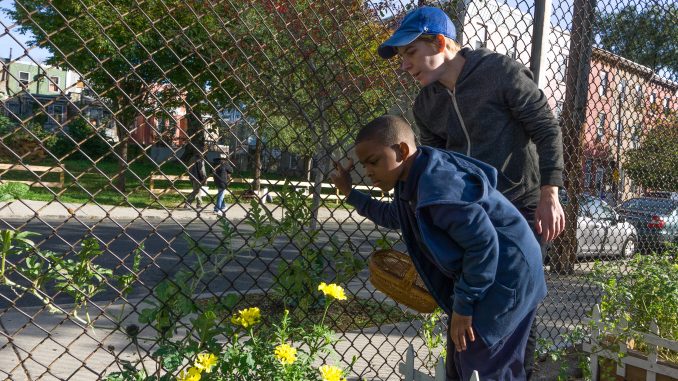
Mayor Jim Kenney spearheaded a $500 million Rebuilding Community Infrastructure project — otherwise known as Rebuild — that is set to start work on parks, recreation centers, libraries and playgrounds throughout the city this spring.
Recreation centers near Main Campus still need financial help — from interior repairs to getting internet access, the centers need to become more modern. But neighborhood recreation center leaders in North Philadelphia have different views on the project’s benefits to their centers.
The project will be funded by $300 million in bonds, revenue from the beverage tax that will go into effect on Jan. 1 and federal, state and local grants, said David Gould, Rebuild’s deputy director of community engagement and communications. It aims to create jobs and revitalize community recreation centers through structural and maintenance improvements.
Philadelphia has more than 400 possible sites that Rebuild could target for improvement.
The Rebuild team will use data gathered in early 2016 to determine which centers most need improvement. Gould said he will direct the most resources to those recreation centers.
To determine which sites are selected for revitalization, the seven-year project will consider multiple factors, like the condition of each site and its surrounding neighborhood, according to Rebuild’s website.
Rebuild administrators will also consider the neighborhood’s poverty and crime rates and health in their choice of recreation centers.
Cameron Walker, the director of Amos Recreation Center on 16th Street near Montgomery Avenue, said he heard about the project but isn’t sure if Amos will see the benefits. He said workers from the city rarely reach out to the recreation center when it comes to improvements to the facility.
“No one ever comes down [to Amos],” Walker said.
Last February, when Kenney released the proposed budget for Rebuild, The Temple News reported that the two-room facility was without internet and had a crack in the wall.
“This building needs to be brought into the 21st century,” Walker said last week.
When a problem needs to be fixed, it could take a week or as long as a year for something to be repaired by the city, he added.
Walker oversees nearly 20 children in the center’s after-school program, and another 40 to 50 children who regularly use the playground and basketball courts.
Jocelyn Marrow, an employee for the center’s afterschool program and the block captain of the 1700 block of North 16th Street, said she would like to see improvements for the building’s electric, heating and lighting.
She said she’s worried that because it is so out of date, Amos will be gone at some point.
“Our kids will have to travel miles just to play basketball,” Marrow said. “What about this side of the neighborhood?”
Gould said one of the project’s goals is to ensure neighborhoods that have been underserved get the high-quality facilities they deserve.
“Who’s to say that we’re going to get the funding?” asked Marrow. “When will this get to us? We need it today. We needed it yesterday.”
Dana Clark, the director of 8th and Diamond Recreation Center, said the smaller playgrounds are often overlooked when it comes to funding because they lack extensive programs and facilities.
Clark said he would like to see changes to the playground area and upgrades to the inside of the one-room recreation center.
Rebuild is still planning its methods of community outreach, but Gould said each site will have a “community engagement approach” tailored to each specific community. He added that this could include door-to-door canvassing, community meetings, surveys, apps and block parties.
Clark said he recognizes it could take time to see improvements to his recreation center — but he’s willing to wait.
“I’ve learned to have patience,” Clark said. “I’m not turning down anyone who wants to help this place. I want to be able to come back here after I retire.”
Kelly Brennan can be reached at kelly.brennan@temple.edu or on Twitter @_kellybrennan.


Be the first to comment